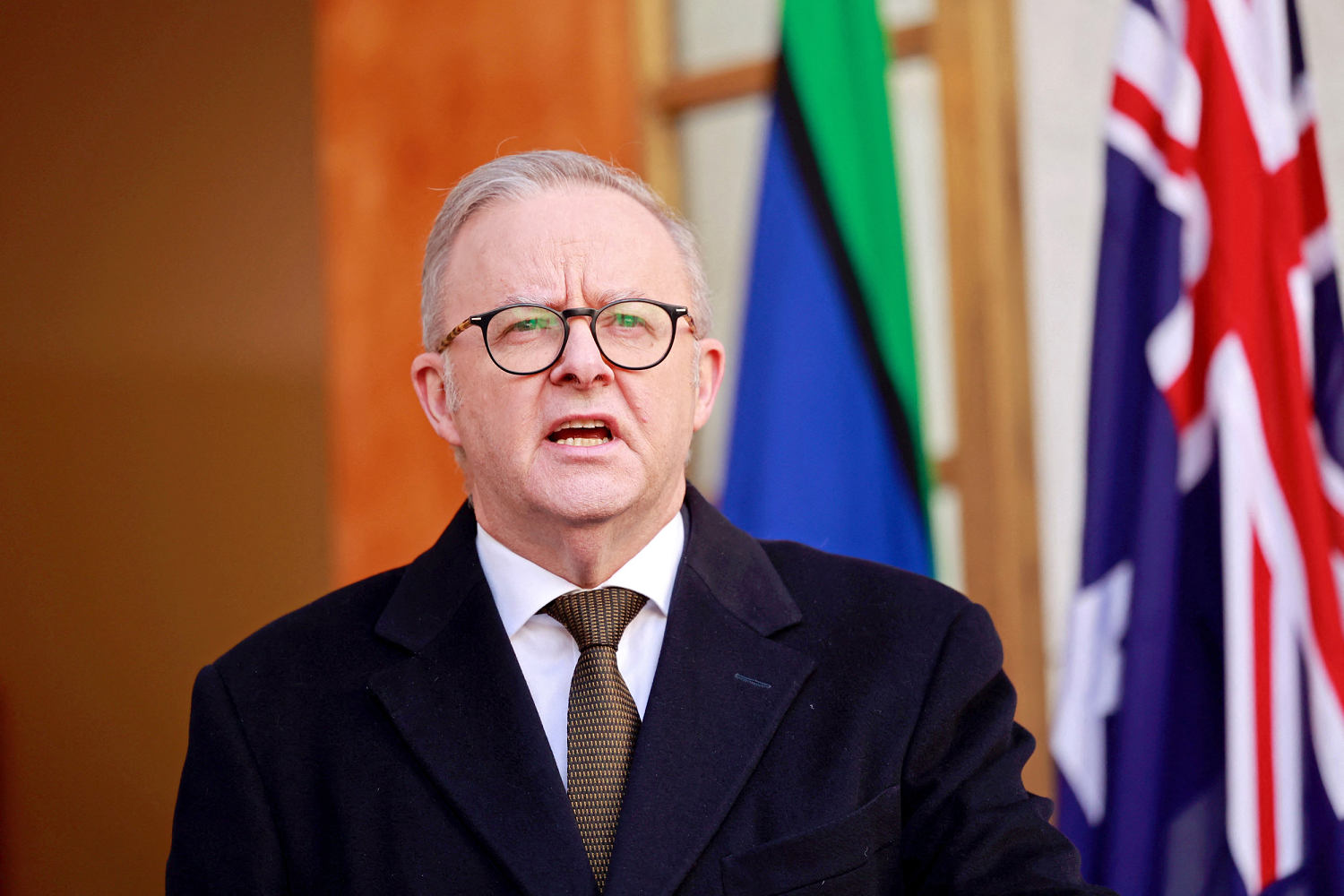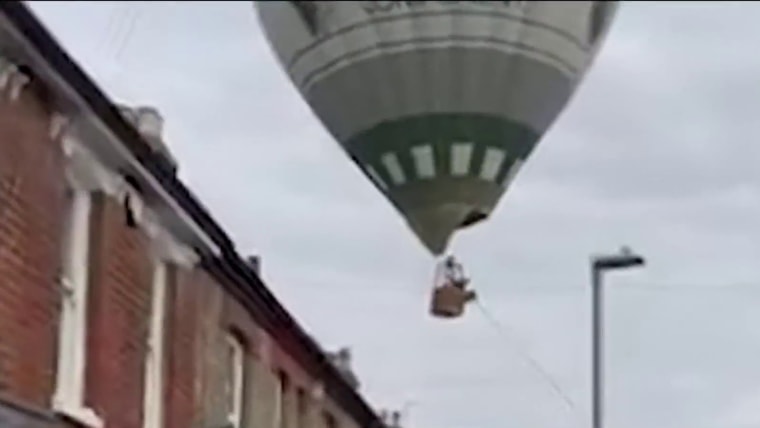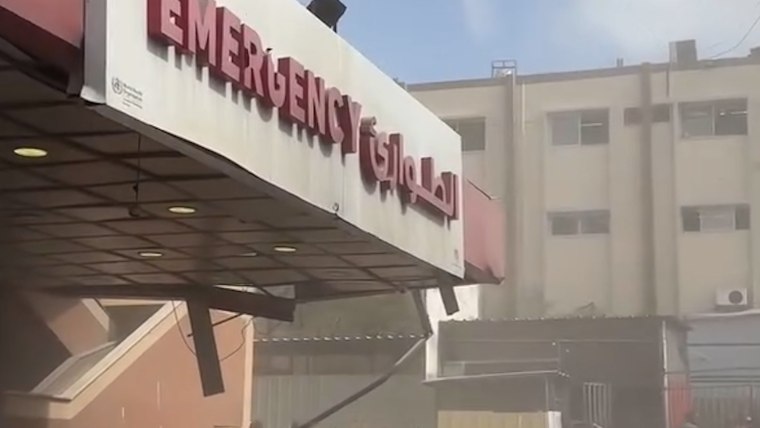What is a ‘double tap’ and why has Israel’s apparent use of it outraged the world?
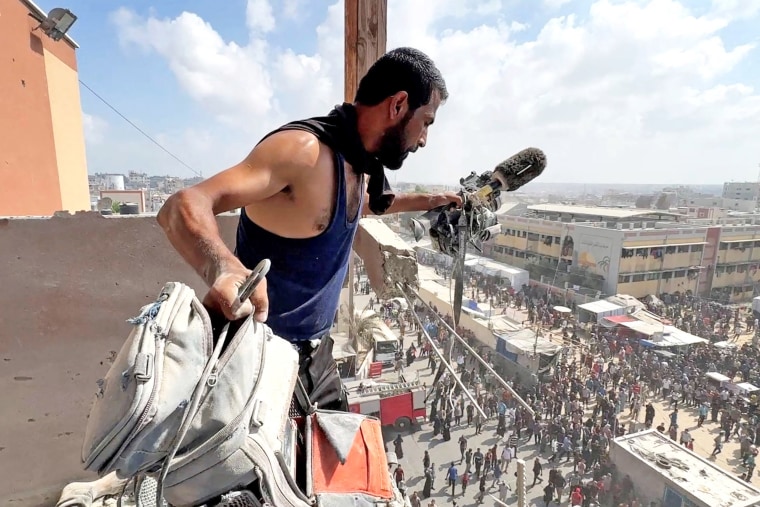
It has become an all-too-familiar scene: first responders, medics and journalists rushing to the site of an Israeli attack. But this time, as they rallied to a shattered stairwell at Nasser Hospital bearing stretchers and cameras, Israel struck again — compounding the scene of carnage and enveloping those attempting to aid and document.
Global outcry mounted Tuesday over this “double tap” strike on Gaza’s largest remaining medical center, which was caught on video by the Arabic language channel Al Ghad TV and others who were filming rescue efforts from the first missile when the second struck.
At least 20 people were killed, including five journalists who had worked for various outlets, including The Associated Press, Reuters and Al Jazeera.
Israeli Prime Minister Benjamin Netanyahu’s office said that the strikes Monday were a “tragic mishap” and that the military was investigating. U.N. Secretary-General António Guterres demanded an independent inquiry into the Israeli strike, while President Donald Trump said he was “not happy about it.”
Israel has barred Western news organizations from entering Gaza, save for occasional tours chaperoned by the Israel Defense Forces, leaving them to rely on Palestinian journalists inside the enclave. The Committee to Protect Journalists, a New York-based nonprofit press freedom group, says that 192 journalists have been killed during the war, and another 90 detained in what it describes as “the most horrific attacks the press has ever faced in recent history.”
What is a double tap strike?
This is not the first time Israel has conducted a “double tap” strike, hitting the same target twice in quick succession.
Double-taps have been deployed deliberately in the past by terrorist groups such as Al Qaeda and Nigeria’s Boko Haram, which would send a second suicide bomber to kill those attempting to help victims of the first.

The phrase “double tap” is not an official legal term and does not appear in the Geneva Convention, but intentionally striking people known to be “protected persons,” such as medics, “implies the allegation of a war crime,” according to Janina Dill, a professor at the University of Oxford, in England, and co-director of the Oxford Institute for Ethics, Law and Armed Conflict.
“The tactic of double-tap strikes is irreconcilable with the conduct of a professional, legally advised and trained military force,” Dill told NBC News, and no such “fighting force should be reasonably accusable of double-tap strikes.”
The “larger moral issue,” she said in an email, was that it was “particularly pernicious to exploit individuals’ willingness of discharging their moral duties of rescue (helping those affected by the first strike) in order to kill them.” She added that “double-tap strikes therefore do not only imply that a war crime is committed, but the tactic should also be reviled and morally condemned.”
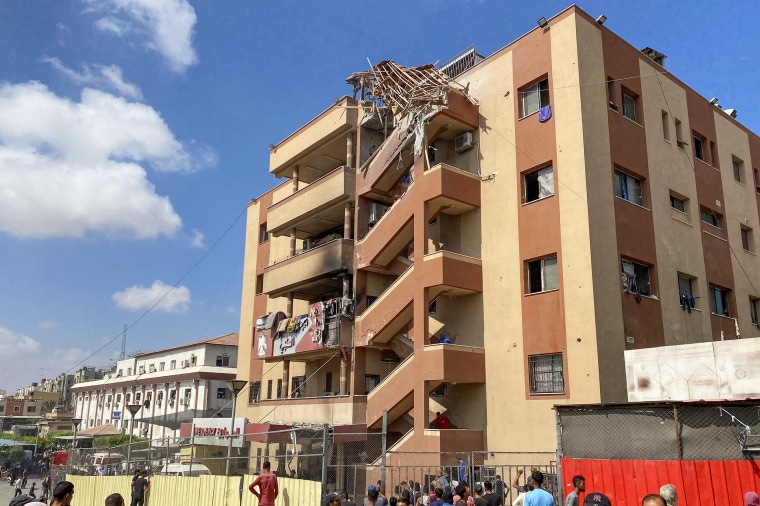
Few if any militaries admit to using double-tap strikes as an overt tactic, and Israel is not the only country alleged to have done so. In 2012, the Bureau for Investigative Journalism found that from 2009 to 2012, CIA drone strikes in Pakistan killed at least 50 civilians “in follow-up strikes when they had gone to help victims.”
Last month, the left-leaning Israeli publication +972 Magazine published an investigation, including interviews with Israeli security sources, that found double-tap strikes had become “standard procedure in Gaza” during the war.
Responding to the widespread outrage, Israeli military spokesman Brig. Gen. Effie Defrin said in a video statement that “the IDF does not intentionally target civilians” and noted that it was “operating in an extremely complex reality.” He said the military would investigate the attack on Monday “to understand the circumstances of what happened and how it happened.”
The IDF declined to comment further when contacted by NBC News.
‘Clouded with dust’
Israel’s Haaretz Newspaper reported that in the attack on Monday, an IDF tank fired at what troops suspected was a Hamas surveillance camera on the roof of the hospital and followed with another to ensure it was hit.
The first strike, just after 10 a.m. local time (3 a.m. ET), hit the upper floors of Nasser Hospital, where doctors, patients and trainees were in the operating department, according to the hospital’s director, Mohammed Zakout.
At the time, a number of journalists were climbing the stairs, as they often did, to get a signal to file their reports and contact their families, according to witnesses. Killed in that initial strike was Reuters cameraman Hussam Al-Masri, who the news agency said was operating a live TV shot on the hospital’s upper floors at the time.
Hatem Omar, 42, was one of the journalists who then rushed to the scene. “I climbed the staircase; a large number of journalists and medics were with me on the stairs,” he told reporters. “Then the second strike happened.”
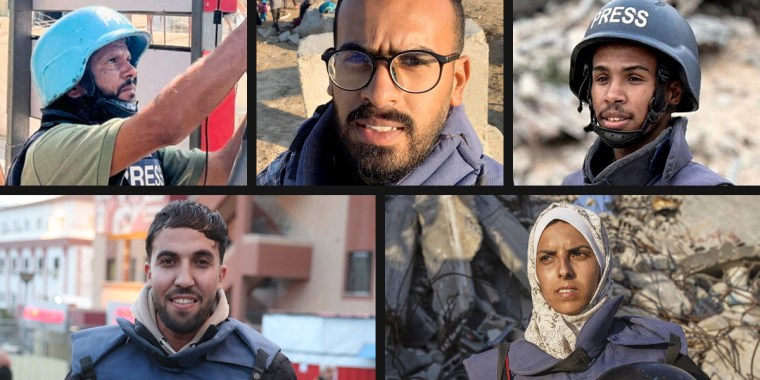
According to Ibrahim al Qanan, who was live on Al Ghad TV when it recorded the second strike, timestamps on the video showed that there was 7 minutes between explosions. Responders waited a few minutes after the first hit before racing up the stairs, he said, only to be caught in the second blast.
The video showed eight men on an external stairwell, three wearing orange high-visibility vests, one a yellow helmet and one carrying a camera. A few of them were gesturing to someone off-camera when the image filled with smoke and debris accompanied by a loud bang and screams. Dozens of people then began running from the scene, now bathed in smoke.
“I witnessed blood everywhere at the site,” Omar said. “The staircase outside the hospital was filled with medics, filled with civilians, filled with people rushing to help, and the place was clouded with dust.”
“The second blast turned the area into a silent, frozen scene, as if the chests of everyone there had been crushed.”
Outside, the fallen journalists — Hussam Al-Masri, Mariam Dagga, Mohammad Salama, Ahmed Abu Aziz and Moaz Abu Taha — were laid side-by-side, still adorned with their cameras and blood-spattered vests bearing the word “PRESS.”

